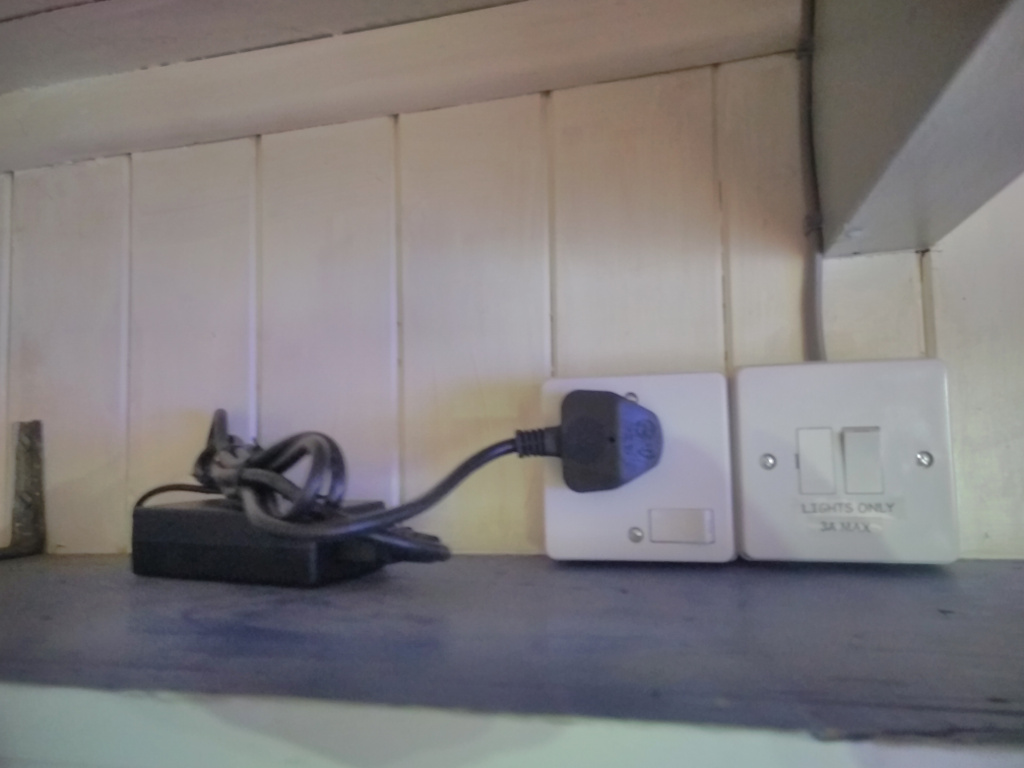- Joined
- 29 Mar 2005
- Messages
- 178
- Reaction score
- 0
- Country

Hi,
On top of one of the kitchen wall units we have this arrangement:

the 12vDC output of the power supply then feeds some LED strips under the unit.
This is connected to one of the kitchen light circuits so that the LEDs light up when that particular light is switched on at the wall switch.
This has been fine for over a year, but in the last week, turning the light on has started to randomly trip the RCD in the consumer unit the moment the wall light switch is pressed (it happens approx 20% of the time). The same happens if the lights are already on and I switch the switch in the picture off then on a few times.
Now the weird thing is that this circuit is not on the RCD protected side (single RCD CU).
Wondering whether there was some weird neutral/earth conductivity going on, I tested it with the earth disconnected in the socket - and it still tripped the RCD.
If I unplug it, I can switch the kitchen wall light on and off as many times as I like and the RCD doesn't trip (last night I switched it on/off 50 times in succession without tripping the RCD).
Yesterday I also managed to trip the RCD by plugging in an extension lead that had an amplifier, my laptop PSU and a few other small PSUs plugged into it. This IS on an RCD protected circuit though ... but I can't think of a good reason why plugging this in would trip the RCD per se, given that having that stuff plugged in hasn't tripped it since.
I'm at a bit of a loss here. Any ideas?
On top of one of the kitchen wall units we have this arrangement:

the 12vDC output of the power supply then feeds some LED strips under the unit.
This is connected to one of the kitchen light circuits so that the LEDs light up when that particular light is switched on at the wall switch.
This has been fine for over a year, but in the last week, turning the light on has started to randomly trip the RCD in the consumer unit the moment the wall light switch is pressed (it happens approx 20% of the time). The same happens if the lights are already on and I switch the switch in the picture off then on a few times.
Now the weird thing is that this circuit is not on the RCD protected side (single RCD CU).
Wondering whether there was some weird neutral/earth conductivity going on, I tested it with the earth disconnected in the socket - and it still tripped the RCD.
If I unplug it, I can switch the kitchen wall light on and off as many times as I like and the RCD doesn't trip (last night I switched it on/off 50 times in succession without tripping the RCD).
Yesterday I also managed to trip the RCD by plugging in an extension lead that had an amplifier, my laptop PSU and a few other small PSUs plugged into it. This IS on an RCD protected circuit though ... but I can't think of a good reason why plugging this in would trip the RCD per se, given that having that stuff plugged in hasn't tripped it since.
I'm at a bit of a loss here. Any ideas?

